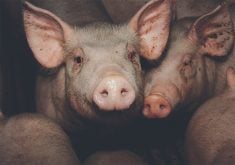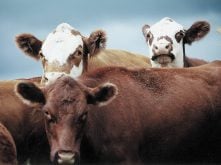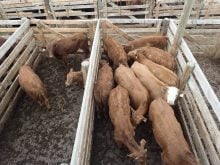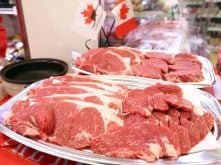A prominent American livestock analyst believes it will be a while before American producers begin to rebuild their cattle herds.
That means cattle prices in North America should be well supported for the next couple of years, barring unforeseen disease breakouts or currency meltdowns.
More on that further down, but first a couple of crop updates.
While the market is focused on the shrinking Russian crop due to drought, the U.S. spring wheat crop is going gangbusters, helping to ensure that the U.S. should be able to step in and fill the demand that Russia and Canada normally supply.
Read Also

More factors affecting winter weather
When you combine a weak La Niña, early Siberian snow, and a warm northern Pacific, it’s easy to see why long-range winter forecasting is so complex.
The U.S. spring wheat average yield will be 46 bushels per acre, according to the U.S. Wheat Quality Council, which sponsored an analysts’ tour of the northern plains last week.
That is larger than the United States Department of Agriculture’s forecast for 44.6 bu. per acre.
But the durum crop might be smaller than expected.
The tour projected durum yield at 38.4 bu. per acre. That is less than the USDA’s forecast of 40 bu. per acre.
U.S. canola yield may be above average, but not record-breaking like last year’s 32.34 bu. per acre, says Barry Coleman, executive director of the Northern Canola Growers Association. Oil content is expected to be down due to heat, he added.
Harvested area is expected to be 1.49 million acres, up from 814,000 last year.
On the other side of the world, India’s monsoon has picked up after a slow start, raising hopes for a good summer crop, including pulses. The Indian weather office forecasts that rain in the remaining two months of the monsoon season will be up seven percent from the norm.
The U.S. cattle herd is the smallest in records that go back to 1973. Chris Hurt, Purdue University extension economist, says that at this point in the cattle cycle, producers would normally be increasing herds.
Indeed, the U.S. herd began to rebuild in 2005 and 2006 but then reversed because of soaring feed costs and the recession.
During the recession, per capita meat consumption in the U.S. fell 6.3 percent to 208 pounds in 2009 from 222 lb. in 2006.
The number of beef cows in the U.S. is now down five percent from 2006.
Hurt says that on a per capita basis U.S. beef supply is down two percent from last year and will fall another one percent next year. That should keep beef prices high and cattle prices well supported.
That opens the door to competition from poultry and hogs. Poultry can react faster and Hurt believes there will be a six percent increase in supply this year and three percent next year.
Pork producers, however, are only now climbing back to profitability and if they expand, it won’t be until the end of 2011 that the fattened hogs will hit the market.
Hurt does not know when U.S. beef producers will start to rebuild their herds. The higher meat prices might discourage a return to the growth in per capita beef consumption seen up to 2006. If so, beef demand might grow only as much as population growth, which is a little less than one percent per year.
Herd growth will be largely determined by the success of the export trade, Hurt says.
The Canadian beef industry varies little from its American counterpart and Hurt’s analysis likely applies north of the border as well.
Remember, you can get daily markets information fromThe Western Produceron our website, which complements our newspaper coverage.
In the daily news category at www.producer.com, we provide regular coverage of what is driving prices at the ICE Canada exchange in Winnipeg and other exchanges.
The same information is available in the daily canola report at producermobile. com, which is designed for smart phones such as Blackberries and iPhones so you can get the information anytime, anywhere.
Last week, we kept up to date as perceptions changed daily about the size of the Russian wheat crop, reviving the rally that lifted all grain and oilseed prices.
Our Winnipeg markets reporter Ed White also provides market insights with a lighthearted touch in his blog.
Through our websites, we try to provide the concise daily information you need to market your crops.
———
Looking for income and potential for capital gains?
odlumbrown. com trust • vision • investment integrity
Ask about “income while you wait.” Contact Bruce Chambers today for an investment strategy that is right for you. Bruce Chambers
Investment Advisor
1 800 788 5677
MEMBER CIPF














